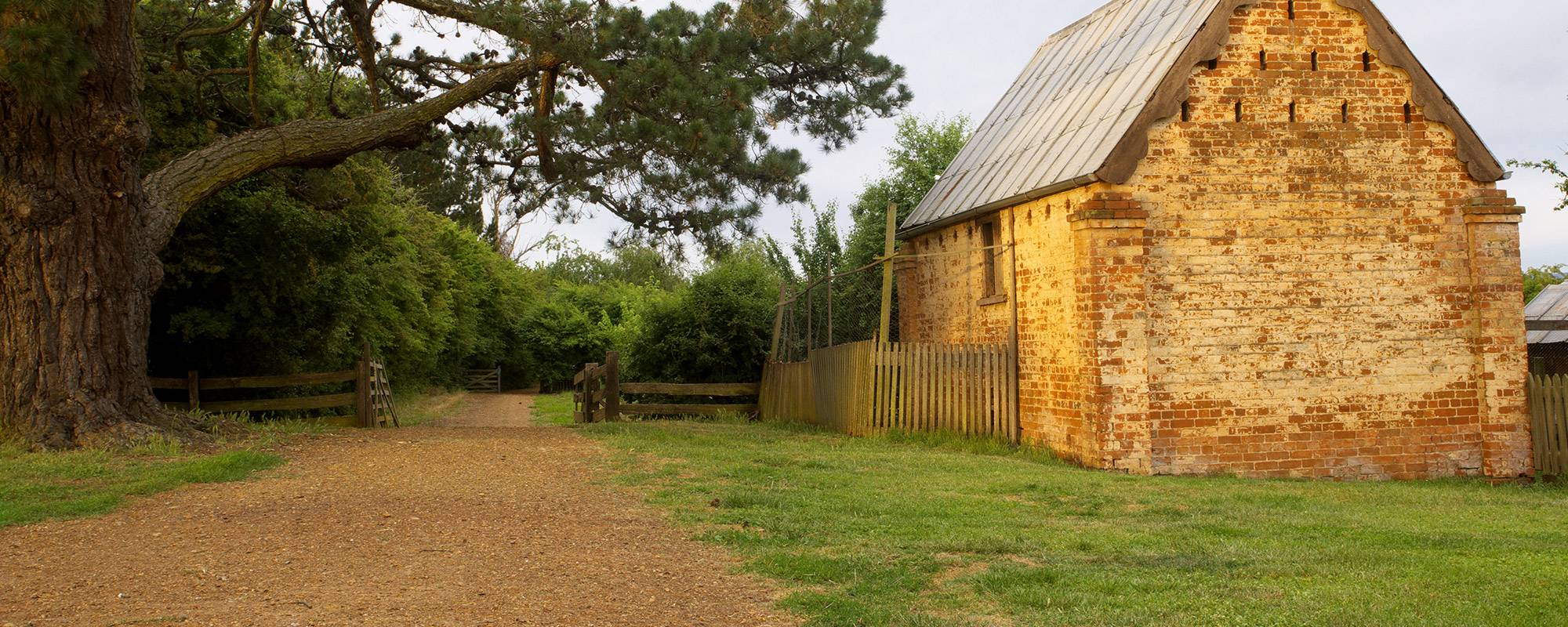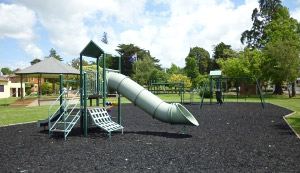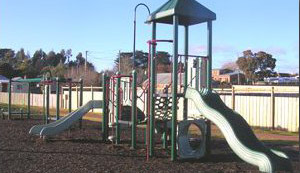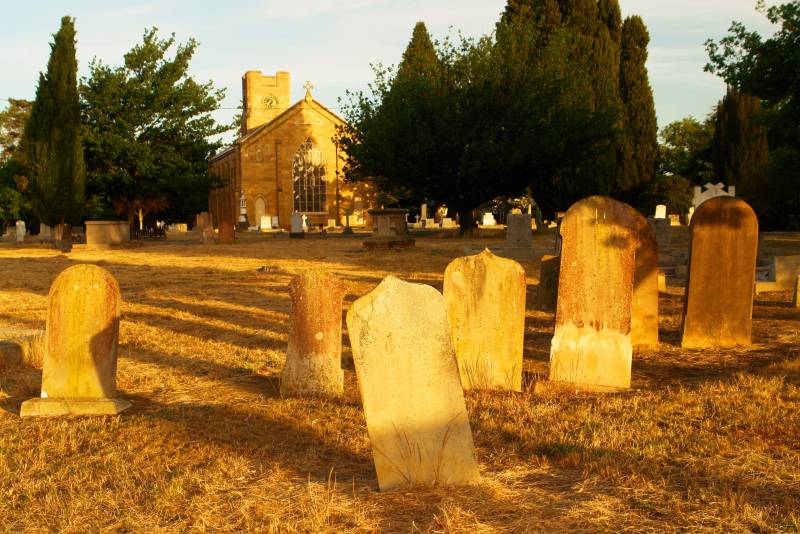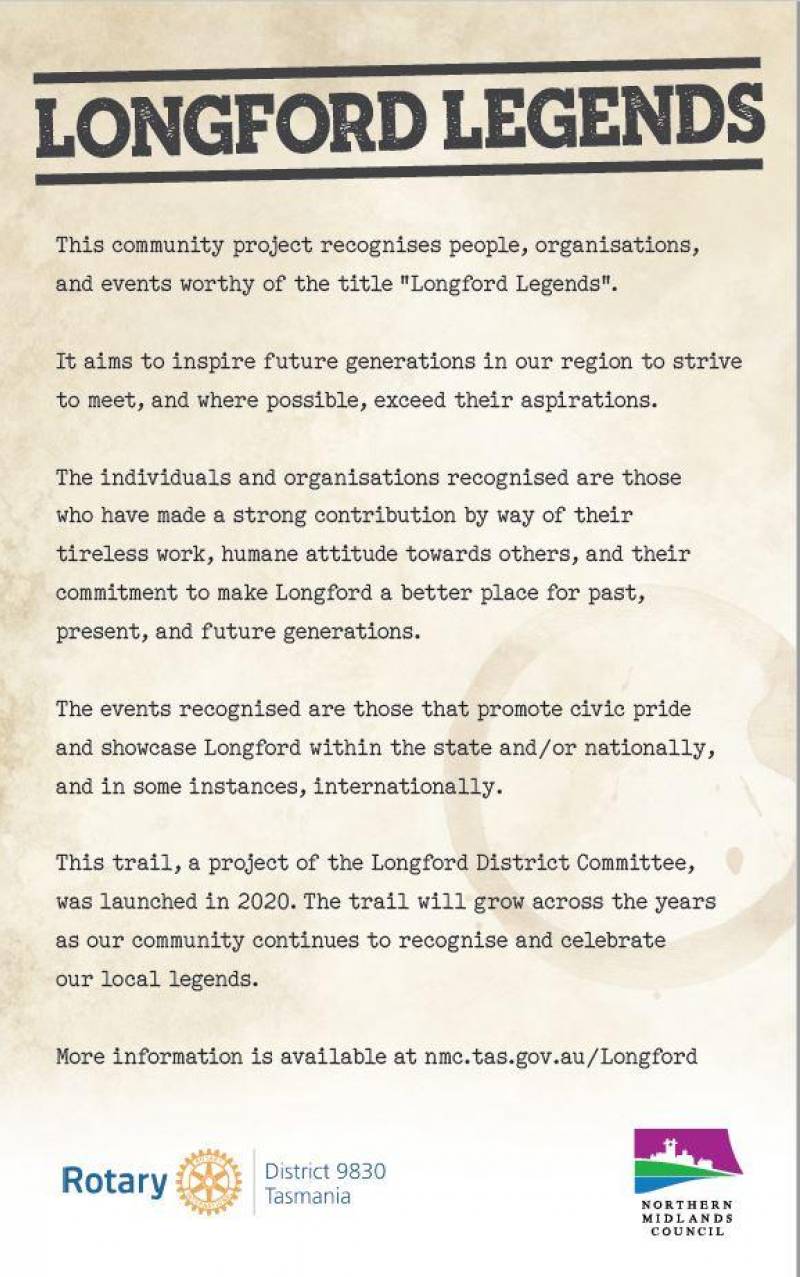
Much admired for its typical English country landscape, Longford’s original Georgian architecture remains largely intact.
Nestled in the foothills of the Great Western Tiers, is the Georgian village of Longford, lying 175 m above sea level at the convergence of the Macquarie and the South Esk Rivers, 27 kms from Launceston and 12 kms off the Midlands Highway.
It is just south of the Illawarra Road, a road connecting the Bass and Midland Highways. It has a population of 4,266 (2006 census) and is part of the Northern Midlands Municipality. The region is predominantly agricultural, noted for wool, dairy produce and stock breeding.
A short drive out of the township, you find two of Tasmania’s finest estates, and recognised UNCESCO World Heritage Convict Sites, Woolmers and Brickendon. Both sites welcome visitors.
#LongfordTasmania
Christ Church, Longford's Anglican Church, was built in 1839 on the site of the original church. It is home to a recognised arboretum, which was planted in the 1830s with the intention of having one sample of every tree mentioned in the Bible. Many of Northern Tasmania's earliest settlers are buried here, including Thomas Reibey of Entally House. The beautiful stained glass windows were designed by William Archer from Woolmers. The churchyard still has its original Lych Gate, where the dead were delivered whilst the family waited for the arrival of the priest.
Longford hosts many events and activities throughout the year with something for everyone, from art, music and concerts, gardens, festivals, vintage cars, dogs, fitness and a country show.
A summary of events in Longford. Please check the events calendar for specific dates and details.
| Every Month | Longford RSL Market, on the last Saturday of each month, at 78 Wellington St. 9am - 1pm. |
| January | New Year's Day Picnic Races Jim Osborne Cup |
| February | Scots Day Oot |
| April | Anzac Day Dawn Service. 25 April |
| September | Longford Jazz Festival |
| October | Longford Show |
| November | Woolmers Festival of Roses Longford Blooms Open Gardens Longford Garden Club Flower Show Woolmers Art Exhibition |
History of Longford
From its earliest time as home to the aboriginal people to European settlement, Longford has grown from a small settlement to a tourist destination renowned for its history.
Aboriginal History
Prior to European settlement, the area was home to the Panninher band of Tasmanian Aborigines.
Story of the Norfolk Plains
The area was settled in 1813 by the earliest convicts and free settlers relocated to Van Diemen’s Land from the abandoned convict settlement on Norfolk Island, hence the name “Norfolk Plains”. Soon they were joined by free settlers from Britian, who were attracted to the colony by the new land grant scheme that was devised by the British Government as a means of “gentrifying” the colony.
The second name of the district, Latour, was that of a leading member of the Cressy Establishment, a syndicate which obtained extensive grants in the region of 1826 and carried on large scale stock and crop farming until 1856, when the estates were broken up and sold, first having given its name to the township of Cressy, near which stood the company’s headquarters.
About this period French names were not over popular with the loyal British settlers and shortly the old names died out and the town and district came to be known as Longford. It is likely that the name was given by Roderic O’Connor government surveyor, who received substantial land grants in the area, because the country junction of the Lake and the South Esk Rivers reminded him, as it has others since, of the junction of the two rivers at Longford the O’Connor home district in Ireland. Be that as it may “Longford” the region became and as such it is known today, far beyond local boundaries because of the fame of its well-breed sheep and cattle.
The First Explorers
In 1805 Colonel Paterson had been located at Launceston only a few months when he despatched navel surgeon Jacob Mountgarrett and Ensign Hugh Piper to explore the surrounding country. These two carried out quite extensive expeditions and expressed their opinion that the region was ideal for the settlement of farmers and stock breeders. Following these reports, a decision was made to settle this country with convicts and free settlers relocated from Norfolk Island. Whilst these initial settlers were not entirely successful, subsequent farmers had by 1818 recorded yields of wheat of up to 30 bushels to the acre.
Early Settlers
Some of Tasmania’s most famous names are listed among the early recipients of land grants in the Longford area, the Archer, Lawrence, Bell and Dumaresq families amongst others.
Thomas Archer was the first of four brothers who came to Van Diemen’s Land with every recommendation to the Governor. Thomas was sent to Launceston in 1813 by Governor Sorell in charge of the commissariat. In 1818 he was transferred to Hobart. In the five years in the north we may suppose he formed a very favourable impression of the Norfolk Plains area for he built a home, “Woolmers”, on his land grant there. To this he retired in 1821. Additions were made to the house in 1834 and today it is one of the most historic and originally intact in Tasmania.
Close to the road is the quaint pump house which lifted the water from the river by means of a working horse.
Thomas Archer’s brothers, who followed him to Van Diemen’s Land, also played bold parts in the development of the Longford district – Joseph at “Panshanger”, one of Tasmania’s biggest farms; William at Brickendon; and Edward at Northbury in the Longford district.
Mr William Effingham Lawrence arrived at Port Dalrymple in 1823 in his own ship, the 70 tonne sloop “Lord Liverpool”, bringing with him his family, servants and the stock and equipment for his farm. He settled first at Point Effingham near the Tamar Heads but later moved into a home he built in Launceston and where he lived while the land was being cleared and buildings erected on his substantial grant at “Formosa”, near Cressy. The first log house was completed in 1824 but was burnt down by bushrangers two years later.
Undeterred, Mr Lawrence built a second and larger homestead on the site and his descendants now operate several notable properties throughout the district.
The Township is Founded
While the pioneer families were taming the district, Longford township itself was founded by Newman Williatt in 1814, who was previously the first postmaster in Launceston. He built himself an inn in 1827 which he called the Longford Hotel. It is right in the centre of the town today and, after many changes of fortune including being a temperance house set up by the Ball Brothers who were Welsh miners of strict religious faith, it was well known as Jessen Lodge in the mid 1990’s, and now renovated back to its original form by local artist Michael McWilliams.
An early development in Longford was the establishment of a school by the Rev. Claiborne. There were other schools in the district, notably Longford Hall and Longford House, the latter being conducted by Dr David Boyd, while the doctor’s sister conducted a school for young ladies in what has been the “Lass O’Gowrie Hotel”. It ceased to hold a licence in 1870 when the then licensee, Edwin Hicks moved to Tattersalls Hotel, which is now the municipal library.
The River and the Mills
Where the splendid railway bridge spans the South Esk below its junction with the Lake River, can still be seen the cutting in the banks where the punt was drawn up to take aboard or discharge its cargo, King’s Bridge ultimately displaced the punt when it was built as a private enterprise by William King, a Longford merchant. The Longford-Cressy-Westbury districts were major suppliers of wheat to the infant colonies of Port Jackson and Port Phillip, and it was inevitable that flour milling became a major industry.
The long brick wall on the western side of Wellington Street at the northern end of the town is all that is left of Ritchie’s Emerald Mill. Which was worked by steam power. Thomas Affleck’s mill still stands opposite the Country Club Hotel. “Wickford”, “Brickendon”, “Woolmers” and “Connorville” all had their mills and most of these still stand today, particularly
The Bushrangers
The district was a famous and lucrative haunt for bushrangers of whom some gruesome stories were told. The graves of four men murdered by outlaws is marked by a tree growing in front of the chapel at “Darlington” near Cressy. Gibbet Hill a mile out of Perth on the Launceston road, is so named from the fact that here executions were carried out, the bodies being tarred and left swinging in the wind as a warning to other evil-doers.
Historic Buildings
Visitors can marvel at gracious homes, well preserved colonial buildings, grand churches and intriguing headstones, a number of which are listed on the Tasmanian Heritage Register.
Discover the rich stories that reveal tragedy, drama and for many, triumph over adversity during “A Walk in Longford’s Historic Precinct’.
Following are some of the more notable historic buildings within Longford and their history.
Brickendon and Woolmers Estates were private farms that utilised assigned convicts, both male and female, who worked largely in agricultural jobs and contributed to the development of Tasmania’s pastoral industry. These Estates are listed on the World Heritage List of 11 Australian convict sites.
For further information please visit their webites:
Woolmers Estate
Brickendon Estate
Christ Church (1839), sandstone, with square tower, lancet windows and buttresses, in the Old Colonial Gothic Picturesque style. Every visitor to Longford must see Christ Church, situated right in the centre of town. Places of worship had been established very early in the century at “Woolmers” and elsewhere but the first actually in the township was in about 1826 and it was situated immediately behind the present beautiful building. In 1829 a new church was built on the site of the present church. However, its foundations were faulty and the present building was erected in 1839. The bell and clock of the present church were transferred from the earlier churches, and carry an inscription intimating that they were donated in 1824 by King George IV.
The cemetery includes many prominent local families including the Archer, Brumby and Reiby families. One of the most interesting vaults is that of James Brumby, who died in 1838, and his family. Brumby’s Creek gains its name after this pioneer family.
Other vaults of importance are those of the Reiby and Archer families. The Reiby’s of Entally were famous settlers. Mary Reiby, a convict girl, went to Sydney after her husband death and became a powerful merchant-queen in that city and appears of the current Australian $20 note. The Harrisons, whose home is “Norley” are descendants of Charles Arthur nephew of Governor Arthur who was perhaps Van Diemen’s Land’s greatest pro-consul.
Amongst the many interesting monuments are those to William Dodery, who, with this father George William Dodery arrived in Launceston in 1829. They went into the hotel business there, William junior had the Mitre Tavern in Longford where the original Brown’s store now stands, and in 1846 built the Blenheim Hotel, which was then the finest in the district. William Dodery was a noted political figure of his day being President of the Legislative Council.
Queen’s Arms Hotel (1835), a double storey brick and stuccoed building in the Old Colonial Georgian style. This may have started as the “King’s Arms” which was operating in 1835, with a name change some time after Victoria became Queen in 1837. The “King’s Arms”, run by Mrs Marriot in 1835, was offered for sale in 1838. The “Queen’s Arms” was run by James Johnstone in 1840 and a little later by Samuel Cox.
Blenheim Hotel (1846), a two storey Georgian brick and stuccoed building, built by William Dodery, who had previously owned the “Mitre” on the site of the original Brown’s Store. William was described as a “hotel proprietor, pastoralist and politician”. The site was originally part of a grant to Thomas Archer of “Woolmers”. The first Longford Show was held in the grounds in 1850, prior to the formation of the Northern Agricultural Society in 1856. The Railway came through Longford in 1871. The landlord at the time cornered the railway market by having a vehicle meet every train and offer free transport to his inn, even though it was further away than most other inns.
Tattersalls Hotel (now Longford Library) (ca 1846), a two storey red brick corner building with neo-classic moulded surrounds to doorways. This attractive building was originally the “Market Square Inn”, later “Tattersalls Hotel” run by Edward Hicks.
Racecourse Hotel (former) (1840s), a two storey brick Georgian inn. It was originally intended to be the Longford Railway Station when the line was planned to run through Longford and Cressy, and then northwards. Throughout its history the building has served as a public house and an old people’s home. During its days as a public house, a rather gruesome murder took place in the bar. A woman was murdered and butchered after stealing and swallowing two gold sovereigns belonging to some farm hands. The men were subsequently hanged at Gibbet Hill.
Longford Town Hall (1880) Elizabeth Noake built the assembly rooms adjacent to the Queens Arms Hotel, which she also owned, prior to her death in 1885. The assembly rooms were built to take the place of the Tivoli Theatre, which had been destroyed by fire.
The assembly rooms were purchased by the Forester Lodge in 1892, and the name changed to Forester’s Hall.
In the early days the entrance to the hall was through a passage in the hotel and into the main hall through a doorway in the wall near the Soldier’s Memorial. The wall which carried the small gallery at that time went up to the ceiling so that the front portion was separated from the main hall. This front portion was occupied by the Commercial Bank of Tasmania and when the present bank was ready for occupation, built by Humphrey & Rowe, the front offices were taken by Mr Alex Archer – Solicitor, and Mr Ludlow Archer – Surveyor, and the interior altered to allow entrance from the front of the hall.
The Forester’s Lodge in 1939 improved and enlarged the hall and extended the gallery for the Star Theatres who secured the contract for showing pictures. When pictures faded out the Lodge sold the building to the Municipal Council, so once again the Hall was improved and is now known as the Forester Hall.
Original Brown’s Store (1889), is built on the site where the “Mitre Tavern” stood in 1836. Alfred Brown established his business at Longford, initially in a small way, with the whole of his stock being conveyed there in a single wagon, but by 1900 he had worked up a business of considerable magnitude. Brown’s Cash Emporium, an imposing double storey red brick facade has stood in Wellington Street at the centre of the town ever since, and for many years, was operated by successive generations of Browns.
Heritage Corner (early 1830s ) perhaps the most visually dominant building in Longford because of its shape and location. Formerly the “London”, later the “Plough Inn”. At one time a chemist’s dispensary, a watchmaker’s and antique shop.
For further information please go to the following websites:
National Trust
Heritage Highway
Public Service
- Albert Solomon, one of the Premiers of Tasmania, who was in office from 1912 to 1914.
- Walter Lee, three-time Premier of Tasmania.
- William Hartnoll (1841–1932), Australian politician.
- David John O'Keefe (1864–1943), Australian politician.
- Sir Norman Henry Denham Henty, KBE (1903–1978), Australian politician.
- Dame Florence "Flora" Reid GBE (1867–1950), the wife of the Prime Minister of Australia Sir George Reid.
The Arts
- Richard Flanagan (born 1961), an author, historian and film director.
- Katharine Parker (1886–1971), an Australian composer, born at Lake River near Longford.
- Tom Roberts, the Australian impressionist artist, who's ashes are buried at the bluestone Anglican Church on the Illawarra Road. For more information on Tom Roberts please see the attached flyer.
Sport
- Ian Davies, Olympic Basketballer, was born in Longford in 1956. Ian represented Australia at the 1980 Olympics in Moscow and 1984 Olympics in Los Angeles. A top scorer for Australia at both Games, and topped the scoring for the entire basketball competition in Moscow. Inducted into the National Basketball League's Hall of Fame in 2001.
- John Lake Allen Arthur, Tasmanian cricketer, was born in Longford in 1847 and died there in 1877.
- Raymond Gordon Stokes (born 1924), a former Australian rules footballer who played with Richmond in the VFL.
Longford Legends Commemorative plaques.
Location: Abel Tasman Way, Stokes Park, Union Street, Longford.
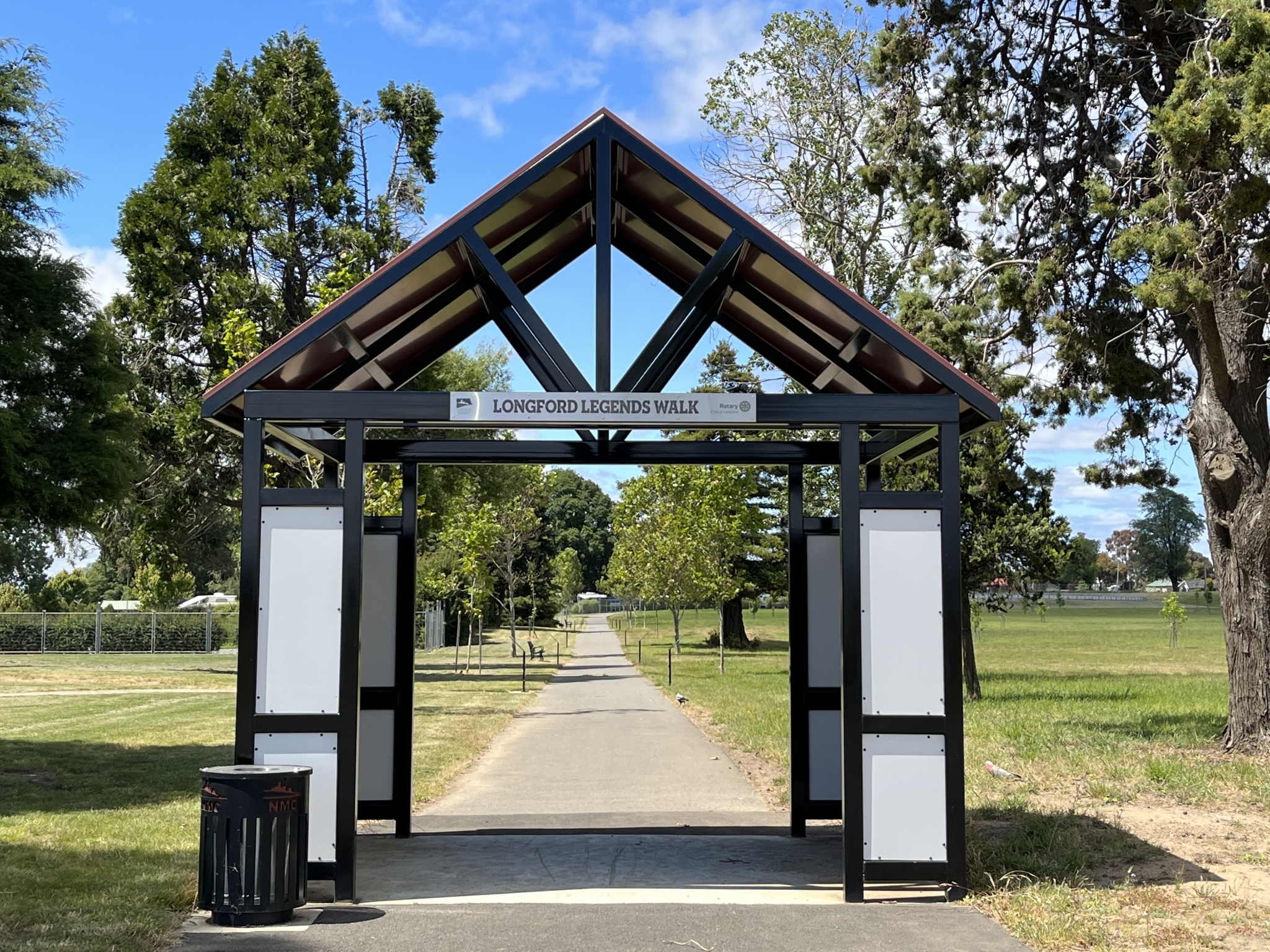
This community project recognises people, organisations, and events worthy of the title "Longford Legends".
It aims to inspire future generations in our region to strive to meet, and where possible, exceed their aspirations.
The individuals and organsiations recognised are those who have made a strong contribution by way of their tireless work, humane attitude towards others, and their commitment to make Longford a better place for past, present, and future generations.
The events recognised are those that promote civic pride and showcase Longford within the state and/or nationally, and in some instances, internationally.
The Longford Legends trail, a project of the Longford District Committee, was launched on 2nd December 2020, hosted by Neil Kearney. The trail will grow across the years as our community continues to recognise and celebrate our local legends.
Click on each link below for the stories of our inductees.
The people of Longford acknowledge and pay respect to the Panninher Clan Pakina takara milaythina nika mulaka (Aboriginal people walked and hunted this land) |
Take a stroll through the trail of theLongford Legendswho have made a strong contribution by way of their tireless work, humane attitude towards others and their commitment to make Longford a better place for past, present, and future generations. |
This community project recognises people, organisations, and events worthy of the title "Longford Legends". |
||
William Pitt 1809 - 1891 |
||||
Motor Racing 1959 – 1965 Australian Grand Prix |
Catherine Smith 1832 – 1925 (nee Keane) |
|||
Rita Peace Blazely 1918 - 2020 |
Roy Preece 1931 - 2018 |
|||
Arch Flanagan 1914 - 2013 |
Take a seat and rest a while |
|||
Mrs Yoshika Long 1924 - 2004 |
||||
George Carins 1886 – 1964 |
(nee Forsythe) |
At the 2022 Longford Legends Induction a plaque was installed to remember the four men who died during the Longford racing events between 1853 and 1968. This plaque is located on Union St, opposite the lytch gate entrance to the the Longford Legends Walk.
- Tim Mayer
- Dennis Wing
- Rodney 'Rocky' Tresise
- Robin d'Abrera
Coming soon!

